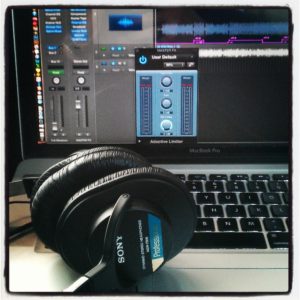 It seemed like a good idea. Why not add a challenge on top of a challenge, I thought?
It seemed like a good idea. Why not add a challenge on top of a challenge, I thought?
I know we all have a set of go-to plugins, while the rest sit in a virtual junk drawer of tools that have either been abandoned or never got used in the first place. So I thought hey, why not switch it up and just use some of those for a change?
And just like that, my practice mix became a challenge to use only plugins that I own but have never used before. How hard could it be, I thought? I’ve been doing this for a decade.
Heh.
This mix was originally just going to be a test of a new version of my mix template, which I update a couple times a year. This version has some new bus routing based on the way Michael Brauer does some of his bussing, at least according to the workflow in a recent Tape Op article. Mixing with this routing would have been challenging enough, as it turns out.
What I quickly figured out was that not only was my workflow hamstringed by taking out my go-to plugins, but having to either figure out what each plugin did and how it sounded was going to make this mix take at least three times as long as usual.
So I stepped back and thought, how can I make this process as workflow-y as possible, while knowing virtually nothing about these plugins?
The answer may be instructive, so stick with me.
I took a step back and thought, ok, what are the types of plugins that I use in every mix? And came up with a short list:
• EQ for correction and color
• Track compression and bus compression
• A trim plugin
• Saturation
• Metering
• Reverb and delay for flavor
That’s pretty much it. And not even all of those are necessary, but they’re part of my typical mix workflow.
The next job was to find unused plugins that fit each of these categories. Some of them I literally had to try out to see what they were because I couldn’t even remember downloading them, let alone what they did. As in, were they a bus compressor or a transient shaper? A synth or a drum enhancer? There were definitely some surprises, both pleasant and not.
(Hint to plugin makers – it doesn’t hurt to say what the plugin does in the name!)
Once I cleared my template of my regular plugins and replaced them with the mystery ones, it just became a matter of figuring out which ones did the job and which I could just disable or delete.
The mix eventually came out sounding the way it would have with my regular plugins and workflow, but now I have a new set of cool tools in my mixing toolbelt and a few less losers taking up space in the pulldown lists.
The bottom line: we get caught up in gear acquisition (ooh shiny!) and tend to acquire tools faster than we learn how to use them. It doesn’t hurt to clean house once in a while. And when you do get new toys, take the time to learn how to use them!
The mix:

